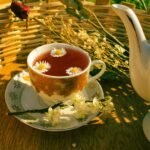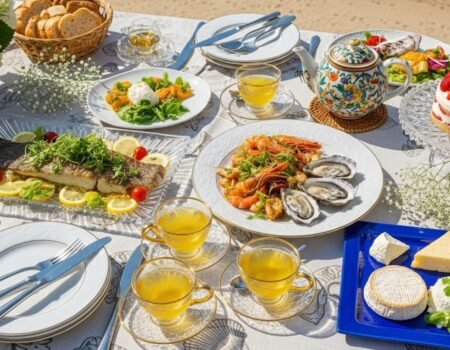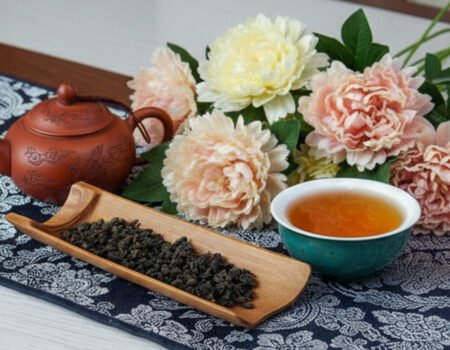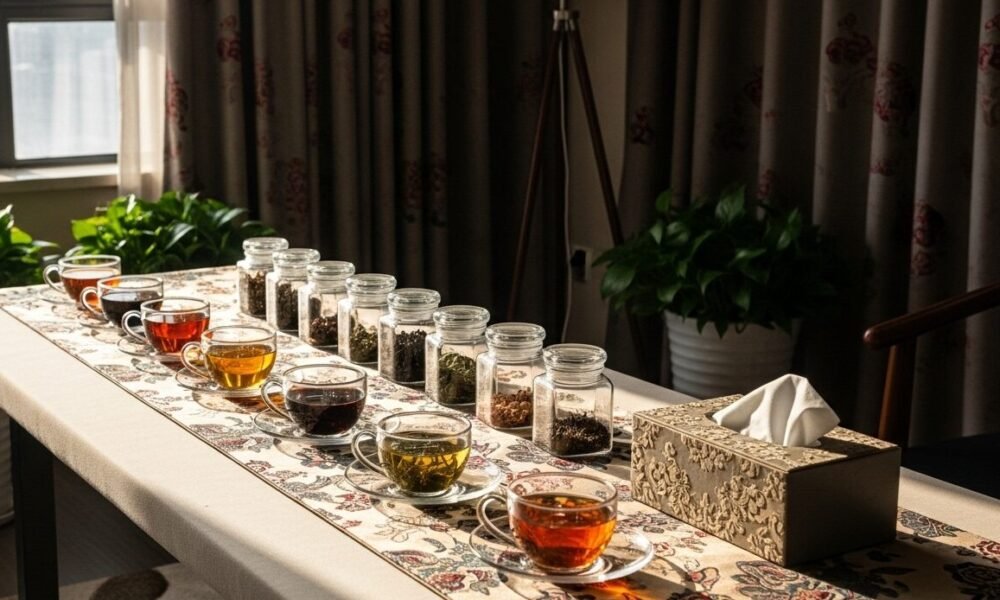
The Ultimate Guide to Seasonal Tea Tasting: Understanding Harvests and Flavors
Index
Index
Seasonal tea tasting offers a unique chance to explore a world of spring flushes, summer harvests, and autumn blends that match each time of year. But why do teas from the same plant taste so different depending on when they’re picked?
This guide dives into the science and sensory experience of seasonal teas.
Key Takeaways
- Seasonal changes directly affect tea flavor, with spring harvests containing higher amino acid levels that create sweeter, more complex tastes in your cup.
- First flush Darjeeling teas should be brewed at 80°C (175°F) for 3-4 minutes to bring out their delicate floral notes and light amber color.
- Research shows harvest timing significantly influences tea’s chemical composition and multiple quality parameters of tea—with spring’s slow-growing shoots producing the highest quality leaves.
- Silver Needle white tea from early spring features only the youngest buds, while later harvest white teas like Shou Mei develop deeper notes of dried mushrooms and tropical wood.
- Oriental Beauty Oolong from Taiwan requires about 800 hand-picked buds to make one bag and develops its honey aftertaste specifically during summer months.
Understanding Seasonal Influences on Tea Chemistry

Tea leaves change with the seasons, creating unique flavors in each harvest. Weather patterns and soil conditions affect the chemical makeup of tea, from amino acids to polyphenols.
Impact of Climate and Topography on Tea Character
Climate shapes tea flavor in powerful ways. Temperature stands as the most critical factor, with cooler regions like Darjeeling producing teas with delicate floral notes. In contrast, warmer areas such as Assam yield bold, malty black teas with rich depth.
Rainfall patterns also play a major role in developing tea character. The monsoon rains of Sri Lanka create the bright, citrusy profiles that Ceylon teas are famous for. Proper moisture levels help tea plants grow tender leaves packed with enhanced flavor compounds and pleasant aromas.
Mountain slopes and valleys create unique growing conditions that affect tea quality. Higher elevations often feature morning fog and cloud cover that shield tea plants from harsh sunlight.
This natural protection changes how the plants produce protective chemicals, directly impacting the final cup’s taste profile. Sunlight exposure influences photosynthesis rates in tea plants, increasing chlorophyll content and flavor-producing compounds.
These environmental factors combine to create distinct regional signatures in teas from China, Japan, India, and other growing regions throughout the year. Tea enthusiasts can taste these differences in loose leaf varieties from various origins.
Effect of Harvest Time on Leaf Composition
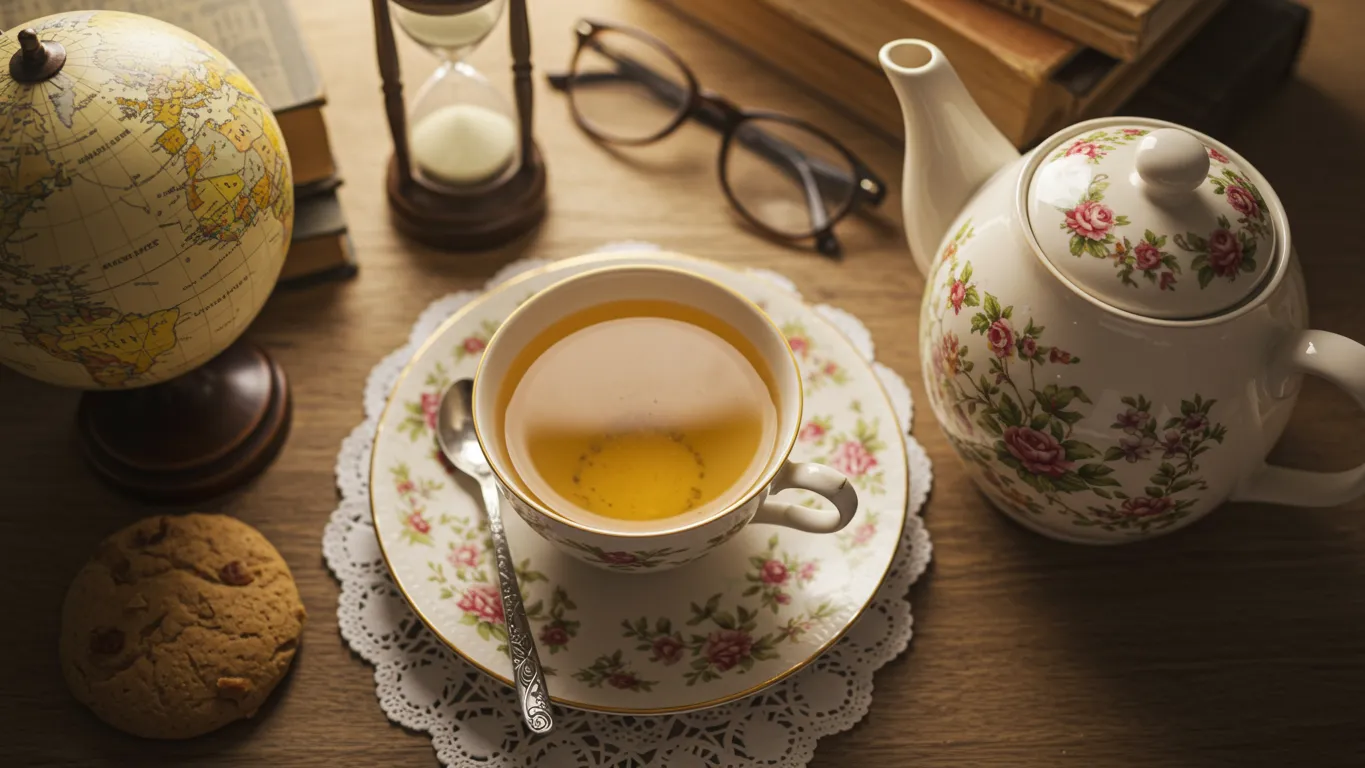
Tea leaves change dramatically based on when farmers pick them. Spring harvests yield leaves with higher amino acid content, creating sweeter and more complex flavors in your cup. Research shows that harvest timing directly affects key compounds like polyphenols, caffeine, and catechins.
These elements determine both taste and health benefits. Scientific analysis reveals that 92.6% of tea’s physical and chemical qualities link directly to when it was harvested. You’ll notice these differences in your teacup too.
Spring teas often brew to lighter, more vibrant colors, while later harvests produce deeper yellow and red hues. For black tea lovers, spring-harvested leaves offer the best overall quality, with the perfect balance of compounds for rich flavor development during processing.
Amino Acid Variations in Spring Harvests
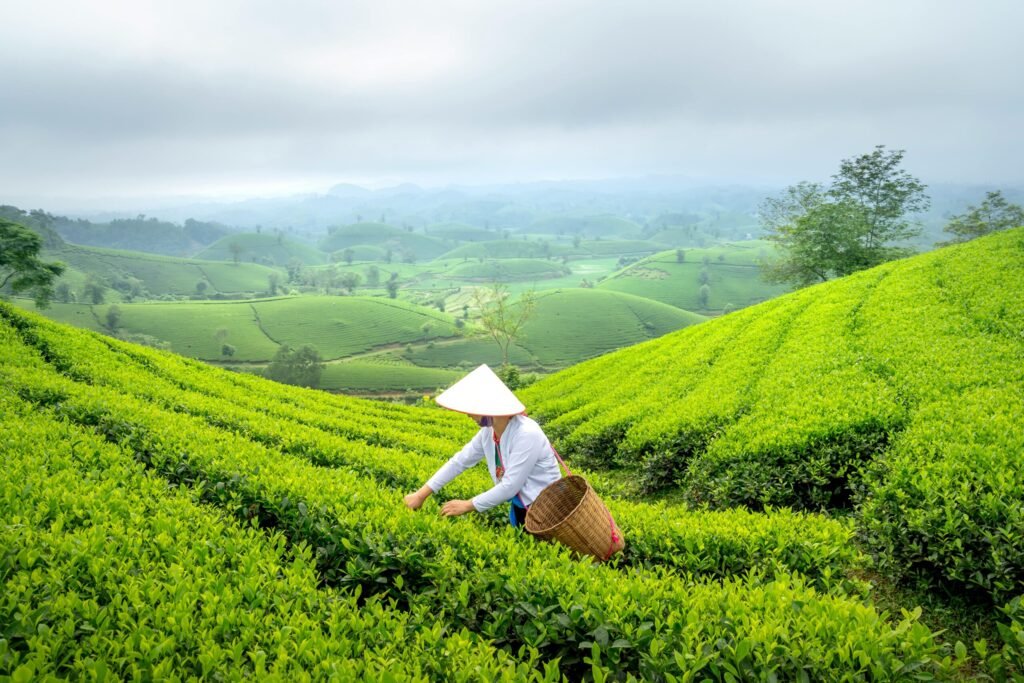
Spring brings special changes to tea leaves that tea lovers can taste. ‘Baiye 1’ black tea shows higher amino acid content during spring harvests, giving it a richer flavor profile.
These natural compounds create the sweet, savory notes that make spring teas stand out from other seasonal picks. Scientists have found that these amino acid levels vary greatly between seasons, with spring showing the most distinct pattern.
Tea farmers can improve their black tea production by focusing on these spring amino acid peaks. The unique chemical makeup of spring harvests explains why many tea experts prize first-flush teas.
This seasonal difference isn’t just interesting science—it directly affects what you taste in your cup. Fresh green tea and light oolong varieties particularly showcase these spring characteristics, making them perfect choices for those who enjoy delicate, complex flavors without the heavier notes found in autumn harvests.
Darjeeling Teas: The Significance of Flushes
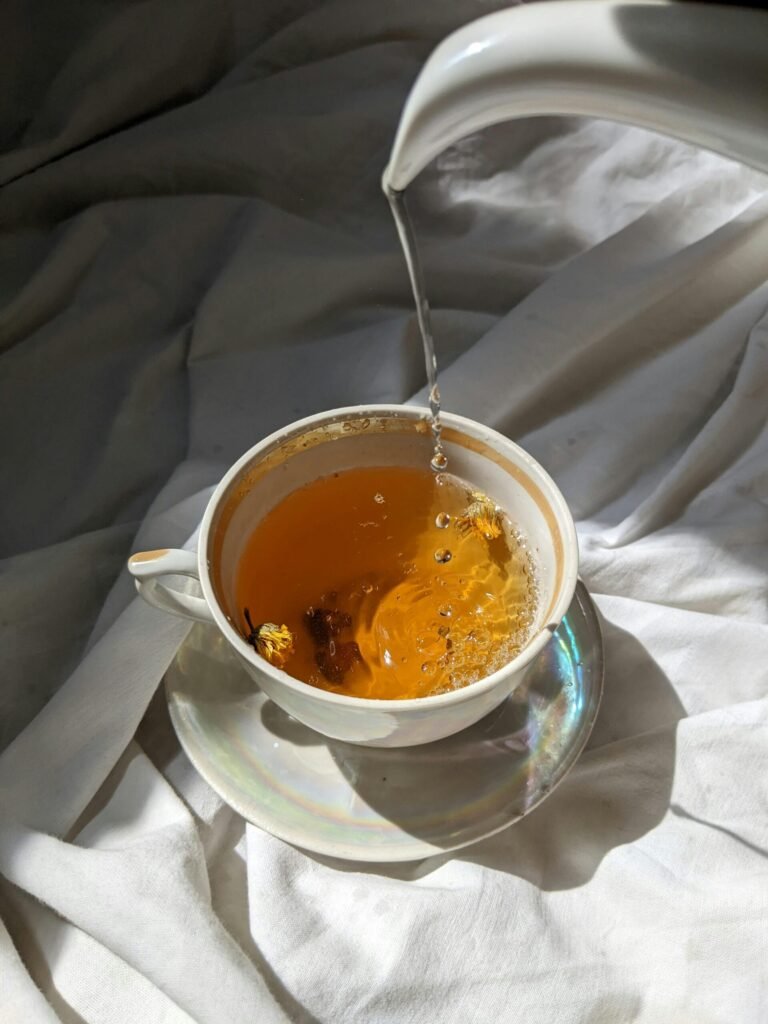
Darjeeling teas change dramatically with each seasonal flush, creating distinct flavor profiles that tea lovers eagerly await. First flush teas, harvested in early spring, offer delicate floral notes and a light amber color that sets them apart from later harvests.
Characteristics of First Flush Darjeeling
First flush Darjeeling teas stand out with their delicate flavor profile and distinct floral notes. These spring-harvested leaves appear greenish and create a clear, bright liquor with a pale lemon color.
The tea offers a perfect balance of subtle sweetness and mild astringency that lingers pleasantly on the palate. Each sip reveals the unique terroir of the Himalayan foothills, where the plants awaken after 3-4 months of winter dormancy between March and April.
This is exactly the kind of prized, delicate tea that a tasting event like Smith’s would feature to open a spring session.
The nutritional makeup of these seasonal favorites includes high levels of catechins and L-theanine. These compounds provide both antioxidant benefits and a gentle calming effect, making this tea both refreshing and soothing.
Tea enthusiasts prize the first flush for its light body and complex bouquet that differs greatly from later harvests. Many tea scholars compare brewing this delicate tea to a Japanese tea ceremony in its precision and care, as proper teaware and temperature bring out its best qualities.
Flavor and Aroma Profiles of Early Harvests

Early-harvest teas capture flavor nuances that later pickings simply cannot match. Darjeeling First Flush teas, in particular, deliver delicate floral-fruit notes intertwined with a light, pleasant astringency that tea lovers seek each spring. Two stand-out examples from the 2024 spring harvest—Pearl Haze (a first-flush Darjeeling white) and Spring Royal (a spring-picked Keemun black)—embody these prized traits beautifully.
Because spring leaves accumulate more amino acids and retain lower catechin bitterness, they yield a sweet, fresh taste unique to the season. Tea masters prize these young harvests for their bright, clean cup character. Terroir in the Darjeeling hills, combined with meticulous plucking that targets only the youngest leaves and buds, further accentuates the teas’ refined profile.
Brewed correctly, these teas infuse to a light amber liquor with whispers of muscatel grape, fresh greens, and sweet flowers. Limited seasonal supply and unmatched flavor complexity drive the premium prices that many tea shops charge for these first-flush treasures.
Brewing Considerations for First Flush Teas
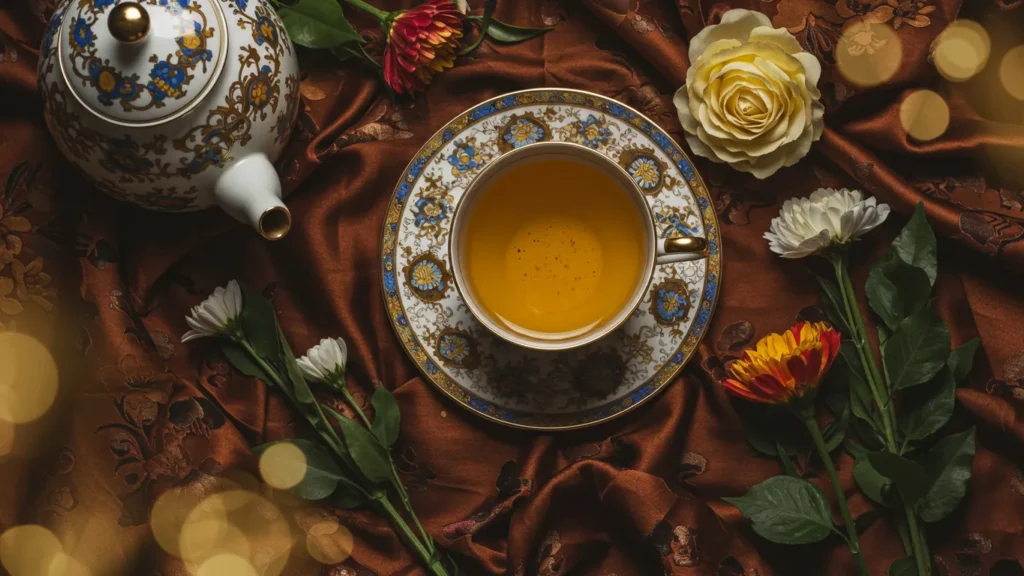
The delicate flavor profiles we explored in early harvests require special brewing attention. First flush Darjeeling teas demand careful preparation to reveal their full character and subtle notes.
Water Preparation
- Heat filtered water to 80°C (175°F) – This precise temperature preserves the tea’s natural sweetness and prevents any bitter notes from developing
- Always use fresh water – Previously boiled water loses oxygen content, which dulls the pure taste of first flush teas
Measuring & Timing
- Measure precisely: 1 teaspoon (2-3 grams) per 8 oz cup – This ratio creates the ideal balance without overwhelming your palate
- Steep for 3-4 minutes – Three minutes brings out delicate floral notes, while four minutes develops deeper muscatel characteristics
- Taste test during steeping – Start sampling after three minutes to catch your tea at its prime moment
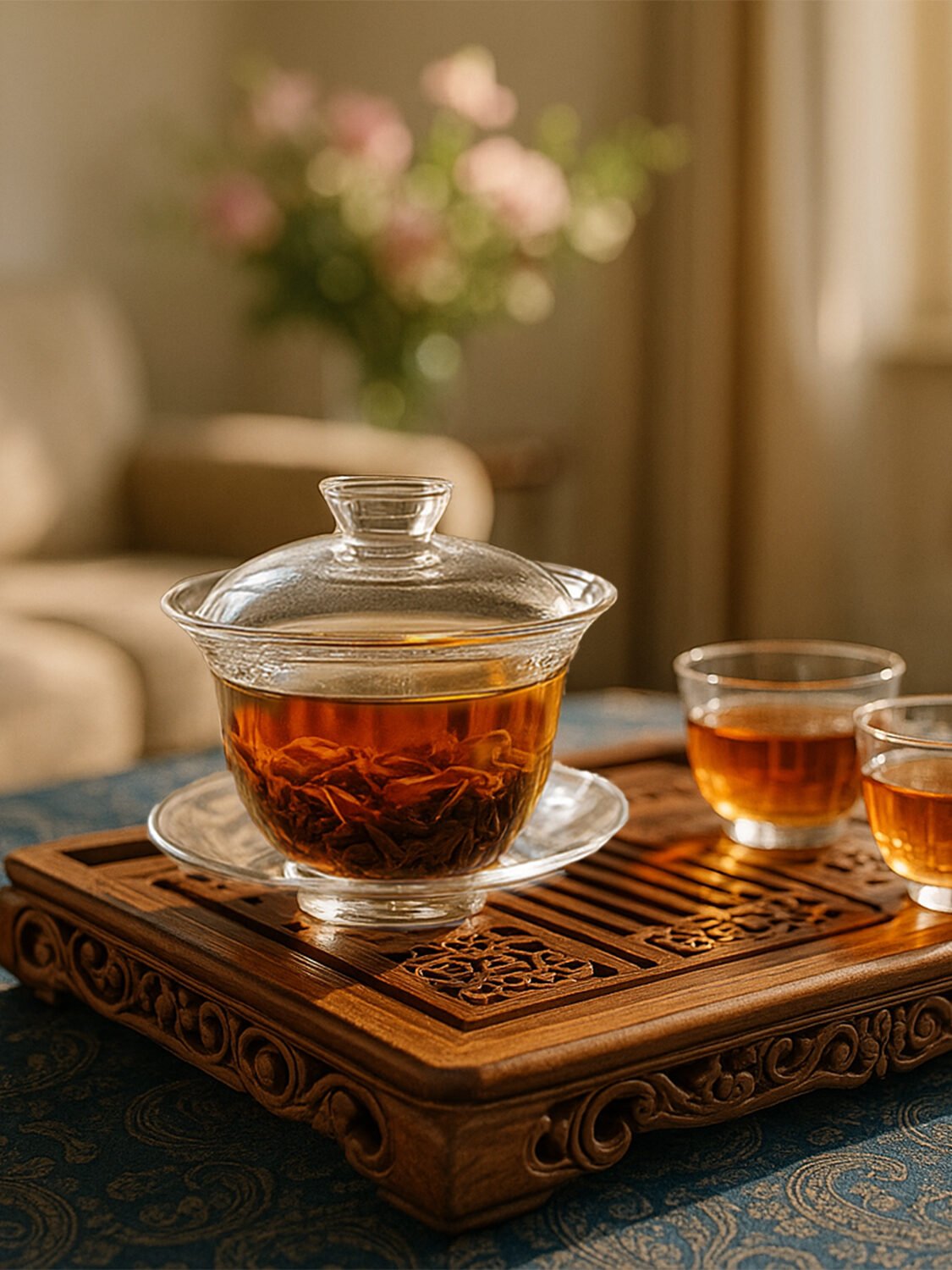
Brewing Techniques & Vessels
- Choose glass or porcelain teaware – These materials won’t alter the delicate flavors like metal containers might
- Try gaiwan brewing for variety – This Chinese vessel allows multiple short infusions that reveal different flavor layers in your tea
Serving & Enjoyment
- Serve these refined teas plain – You’ll appreciate their character best without milk or heavy sweeteners
- Add only a slice of lemon if desired – This light addition complements rather than masks the tea’s natural profile
- Savor within six months of harvest – First flush Darjeelings taste most vibrant during spring and summer sipping sessions
Storage & Freshness
- Store in airtight containers – Protect your investment from light, moisture, and strong odors
- Keep away from kitchen aromas – First flush teas readily absorb surrounding scents, which can compromise their delicate character
Seasonal Variations in White Tea Production
White tea shows clear flavor shifts from spring to fall harvests, with early Silver Needle teas bringing sweet, delicate notes while later harvests develop deeper, nuttier profiles – discover how these seasonal changes affect your cup in our full guide.
Profile of Early Spring Silver Needle

Silver Needle white tea stands as one of the most prized teas from China’s Yunnan Province. Harvested during early spring, this rare tea features only the youngest buds, making it labor-intensive to collect and more expensive than other varieties.
The flavor profile offers light floral notes with fruity and herbaceous undertones that dance across your palate. Its smooth texture completes the delicate experience that tea enthusiasts seek in premium white teas.
Brewing this elegant tea requires careful attention to bring out its best qualities. Near-boiling water works well for Silver Needle, though brief infusions prevent any bitter notes from developing.
Fujian-grown Silver Needle delivers a more delicate, refined taste, while Yunnan versions provide bolder flavor characteristics. Many tea lovers appreciate both the taste and the visual beauty of these silvery buds steeping in clear water, creating a cozy experience perfect for rainy days or thoughtful moments.
Flavor Differences in Later Harvest White Teas (Shou Mei/Gong Mei)
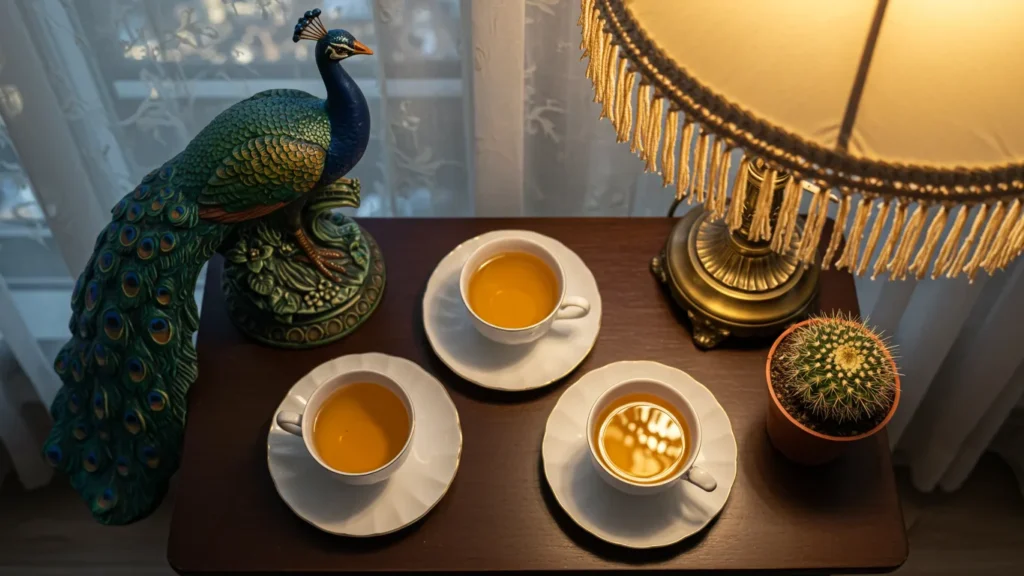
Later harvest white teas offer distinct flavor profiles worth exploring. Shou Mei ranks as a lower grade white tea compared to Gong Mei, but brings unique tastes to your cup. Mature Shou Mei delivers notes of dried wild mushrooms and tropical wood, creating a rich sensory experience.

The liquor appears darker with a golden yellow infusion and packs a stronger taste than its counterparts. Tea enthusiasts often notice that younger Shou Mei presents a thinner profile with complex flavors but lacks standout elements that make it memorable.
Gong Mei provides a different tasting journey with its soft and slightly sweet character. This delicate tea offers a gentler approach to white tea drinking, making it perfect for afternoon sipping or pairing with light desserts.
Unlike the bold character of pu-erh or the grassy notes of matcha, these later harvest white teas develop subtle complexity through their processing. Many tea lovers appreciate these seasonal variations, especially during cold winter days when a cup of something special brings comfort.
The differences between these teas showcase how harvest timing affects the final cup quality.
Green Tea Flavors Through the Seasons
Green tea changes its taste with each season, from the sweet spring harvests to the deeper summer notes – join us next time to explore how harvest timing affects your favorite cup and learn why tea lovers wait all year for shincha, the prized first-flush Japanese green tea!
General Impact of Harvest Timing on Green Tea
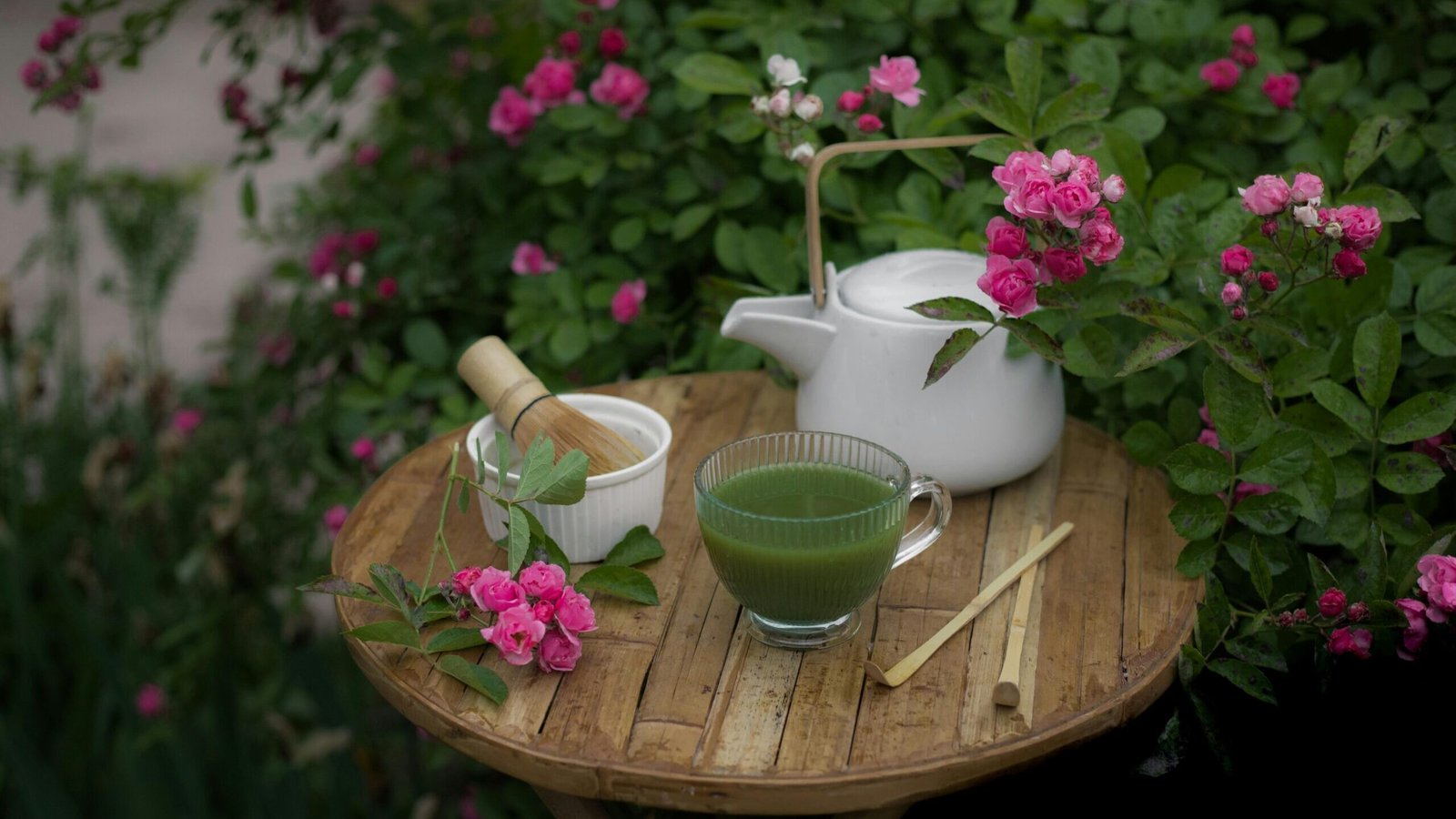
Harvest dates shape green tea’s flavor profile more than any other factor. Ming Qian teas, picked before early April, offer sweet, tender notes prized by tea experts. These early spring leaves contain higher sugar content and fewer tannins than their summer counterparts.
Teas harvested between Qing Ming and Gu Yu festivals provide balanced flavors that new tea drinkers often prefer.
Summer harvests yield more robust cups with stronger tannins and less natural sweetness. The leaves grow larger and tougher as the season progresses. Elevation plays a crucial role too—high mountain farms can produce spring-like flavors despite later harvest times.
Climate change now disrupts traditional picking schedules, as shifting rainfall and temperature patterns alter growth cycles and affect tea quality across growing regions.
The Role of Spring Harvests in Umami and Sweetness

Beyond timing considerations, spring harvests play a crucial role in creating teas with exceptional flavor profiles. Spring teas like matcha, sencha, and shincha contain higher levels of amino acids, which directly contribute to their rich umami taste.
These early harvest teas shine with natural sweetness that balances their fresh, vibrant character. Japanese tea farmers prize the first spring harvest, called Ichibancha, because it produces the most prized cups with complex flavor notes.
Tea lovers often notice the difference between spring harvests and later pickings through taste alone. The umami sensation, described as a pleasant savory quality, reaches its peak in these spring varieties.
Proper brewing techniques help highlight these special flavors in spring teas. Many tea enthusiasts seek authentic Japanese spring teas for their distinctive sweet and umami characteristics.
These delicious green varieties offer a perfect introduction to seasonal tea appreciation for both new and experienced tea drinkers.
Unique Seasonal Effects in Other Tea Types

Discover how seasons create magic in teas like summer harvest Oriental Beauty oolong with its honey notes and spring sheng pu’erh with bright, floral qualities.
Oolong Teas: The Case of Summer Harvest Oriental Beauty
Oriental Beauty Oolong stands out as a prime example of how seasons affect tea quality. This special tea from MiaoLi, Taiwan grows at 1,300 feet elevation and reaches 85% oxidation, giving it rich flavor notes of stone fruit, plum, apricot, and honey.
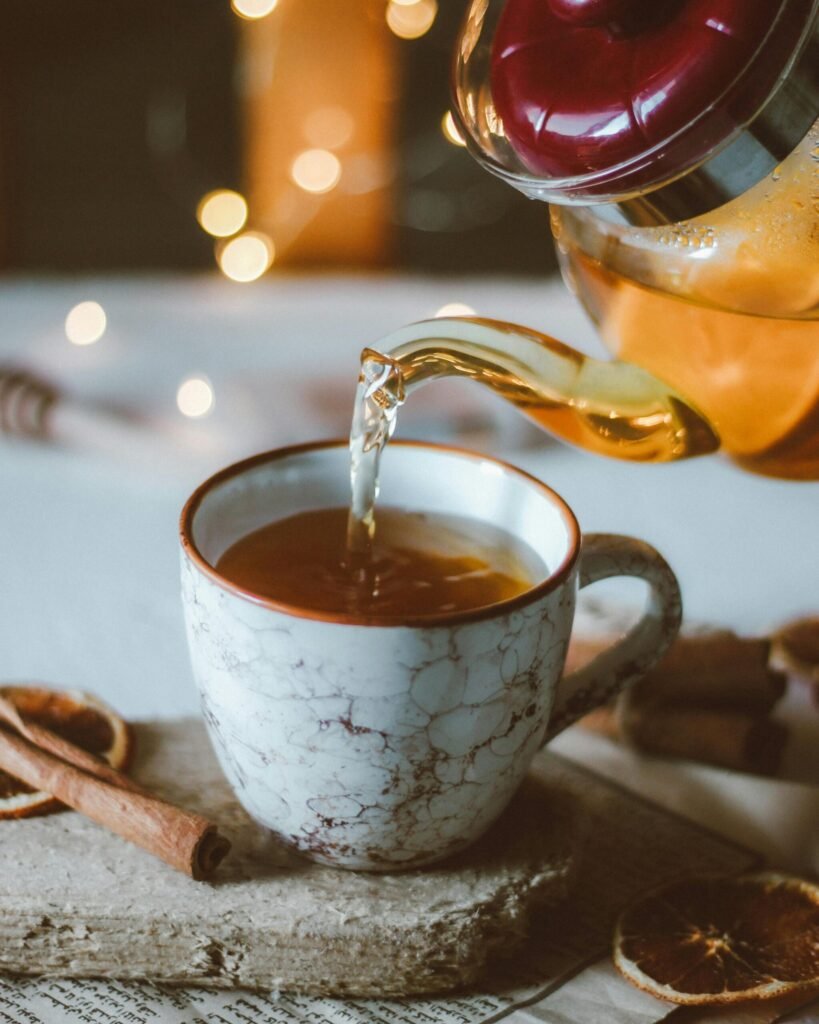
The young tea buds require careful handpicking – about 800 buds make just one bag! Tea jassid insects play a key role in creating its unique taste profile.
The summer harvest timing matters greatly for this prized oolong. Unlike spring teas that offer bright, fresh qualities, Oriental Beauty develops its signature honey aftertaste during summer months.
Its smooth body carries complex flavors that tea lovers seek in premium oolongs. This highly oxidized tea shows how summer conditions create distinct profiles that differ from other seasonal harvests.
Sheng Pu-erh: Initial Profiles of Spring Harvests
Spring harvested raw pu-erh from large leaf varieties creates distinct flavor profiles tea lovers seek. These prized teas come from ancient tree groves along the China-Laos border, offering unique taste notes.
Fresh spring pu-erh presents bright, floral qualities with hints of elderflower and Italian plum that many find appealing. The shio undertones add depth to these special teas.
Tea experts prize these spring harvests for their complex character that changes with age. Young sheng pu-erh starts with vibrant, sometimes bold flavors that mellow over time. Many collectors store these teas for years, allowing them to develop deeper, more subtle qualities.
The transformation from fresh to aged creates the fascinating journey that makes pu-erh so valued in the tea world.
Conclusion

Ultimately, understanding how climate and harvest timing create unique profiles transforms a simple cup of tea into a story of its season. From the bright, floral notes of an early harvest Darjeeling to the rich, honeyed character of a summer oolong, each sip reflects a specific moment in time.
For tea lovers eager to experience these nuances directly, exploring collections from expert brands can be a revelation. Purveyors like Smith Teamaker, for instance, often build their portfolios around these principles, offering a perfect opportunity to taste and compare the year’s best offerings.
Grab your favorite mug, select a seasonal tea that speaks to you, and let the warmth of these special blends enhance your daily ritual.
For more insights into perfecting your tea tasting experience, visit our guide on advanced tea tasting techniques.
FAQ
1. Is spring harvest tea always the best?
While spring harvests are prized for their delicate, sweet flavors from higher amino acid levels, the “best” tea is a matter of personal taste. Many tea lovers prefer the bolder and more robust character of summer or autumn harvests, which often develop richer, fruitier notes.
2. How can I identify a seasonal tea when I’m buying it?
Reputable vendors will specify the harvest time for premium teas. On the packaging, look for terms like “First Flush” or “Autumnal” for Darjeeling, “Shincha” for Japanese green teas, or “Ming Qian” for early Chinese harvests. If this information is missing, the tea is likely a general blend.
3. What’s the main difference between a “first flush” and a “second flush”?
A “flush” refers to a period of new leaf growth. The first flush, harvested in early spring, uses young leaves to produce a light and floral cup. In contrast, the second flush is harvested later in the year from more mature leaves, creating a fuller-bodied and darker tea with more robust fruity notes.
4. How should I store delicate seasonal teas like a first flush?
Freshness is critical for early harvest teas. To preserve their fragile character, store them in an airtight container in a cool, dark, and dry place, away from any strong odors like coffee or spices. It is best to enjoy these delicate teas within six to twelve months of their harvest date.
5. Besides Darjeeling, which teas are most affected by seasonal changes?
Many teas have distinct seasonal profiles. For instance, Japanese and Chinese green teas are significantly sweeter when harvested in spring. Certain Taiwanese oolongs develop their unique honeyed notes only in summer, and white teas can range from light and floral in early spring to woody and fruity in later harvests.
References
- https://teatheworld.com/blog/the-impact-of-climate-on-tea-flavor-profiles/?srsltid=AfmBOoohnzN_uaivmtvb8wBSTnh97_g2cBJHtJW7iD0mwowM1wK74sGH
- https://yunomi.life/blogs/japanese-tea-guide/climate-change-and-tea-chemistry?srsltid=AfmBOoqmKt74le5vlgH68oMRdaXeSrWbCZfM34aN0046f7M9ERlknEss
- https://pubmed.ncbi.nlm.nih.gov/36557856/
- https://pubmed.ncbi.nlm.nih.gov/40263789/
- https://www.researchgate.net/publication/260306780_Quality_evaluation_of_black_CTC_teas_based_upon_seasonal_variations
- https://happyearthtea.com/blogs/tea-101-darjeeling-tea/darjeeling-flushes-explained?srsltid=AfmBOorDoUfnXmI34gjkp9d1_MGCKRxqHQIjezVOtWWXzN6Xdchs3pBI
- https://www.vahdam.com/blogs/news/your-guide-to-first-flush-teas-meaning-brewing-taste-more-1?srsltid=AfmBOoqECASkaRQdwOZZ9SR3G4BA1HEIEHP84WpQrVDnQMWZcxMLEdFy (2024-04-30)
- https://www.goldentipstea.com/blogs/all/brewing-first-flush-darjeeling-tea?srsltid=AfmBOoqvKxYLQQrfVqYmZ2ur2jRclrKMi9K2bK3TiiU2wZ7st6Myk_sC
- https://www.goldentipstea.com/blogs/all/brewing-first-flush-darjeeling-tea?srsltid=AfmBOooGnmK6W-ol6zV-_lPRjKWN6sjE8wr6CXAl17a8hGdDHmfvbIjG
- https://www.smithtea.com/products/yunnan-silver-needle?srsltid=AfmBOop1Stp7izmZ8QpU8lNXC-YryS4GrYj11SaWwpKvk7I4hCzsJycx
- https://www.teacurious.com/guide-silver-needle?srsltid=AfmBOorvI5jF8MWAoINCPWvF7EX7zi1mrF1VGGoYZDdZNlE1bFvioPpM
- http://teaintheancientworld.blogspot.com/2017/06/comparing-compressed-white-teas-shou.html (2017-06-26)
- https://redblossomtea.com/blogs/red-blossom-blog/types-of-green-tea-the-importance-of-harvest-date?srsltid=AfmBOornycjJAhViig3TnXz3jPZYFh1HG3qH52CmGwN1Hhoc6JjTqc3r
- https://www.bokksumarket.com/blogs/magazine/japanese-tea-for-spring-refreshing-brews-to-savor-the-season?srsltid=AfmBOop9QodRoZphlepZUzqZWVMi_6iAthv8b1D3Z5sdilvOJstvA2vO
- https://ujido.com/blogs/matcha-insider/springtime-first-tea-harvest-season-begins?srsltid=AfmBOopaGryR0n-9cFyiluC201E69k0ML1UZH59HJl3Xdet0cckkkJ7j
- https://www.oolongteacollective.com/products/oriental-beauty-oolong
- https://www.paperandtea.com/products/oriental-beauty-n-403
- https://www.smithtea.com/products/tian-men-sheng-raw-pu-erh-cake?srsltid=AfmBOoqBIxxsbbuF69lDL7x3SYBXik66qjD8rq_uUEvqvBdQH5nn2MBS



